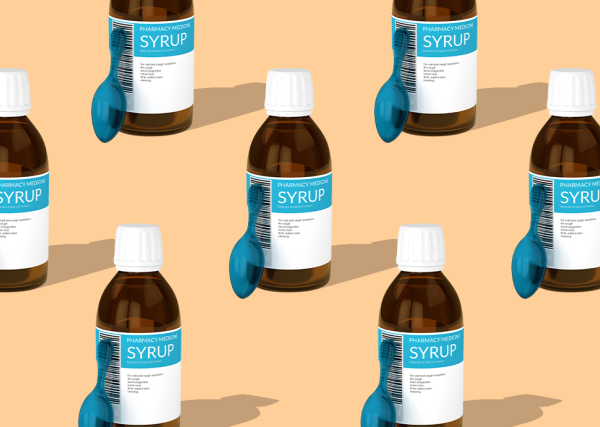7 things moms need to know about sun safety and skin cancer.
Moms are amazing detectives, especially when we know what we’re looking for. When things change, we’re usually the first to notice. That is our most important superpower when it comes to keeping our kids safe from skin cancer.
This summer (and always) here are seven really important things moms need to know about sun safety and skin cancer.
Moms, here are 7 things you need to know about sun safety and skin cancer.
Fact: kids can get skin cancer, and some are high-risk.
It’s not common, but pediatric skin cancer does happen, it’s on the rise, and pediatric melanoma is the most common skin cancer diagnosis. Since melanoma can be life-threatening if not treated as early as possible, a lifetime of sun safety and protection habits is critical to preventing all types of skin cancer in childhood and beyond.
“There are genetic factors that make some kids high risk,” says Dr. Robin Gehris, chief of pediatric dermatology at Children’s Hospital of Pittsburgh of University of Pittsburgh Medical Center. She is also a mother of two. “We can’t control those factors, so we focus on prevention.”
Children who are at high risk for skin cancer include:
- Children with fair skin, red hair or light-colored hair, and light-colored eyes
- Children with a family history of skin cancer
- Children born with large moles
- Children who are immune-suppressed due to a medical condition or medical treatment such as radiation or biologics therapies
“I recommend yearly, full-body skin checks for high-risk kids,” says Dr. Gehris. Since most kids are modest, skin checks can be upsetting. Dr. Gehris recommends allowing them to wear a swimsuit during the exam that exposes enough skin for a thorough exam, but not so much that they’re uncomfortable. This way the process becomes a habit they’ll continue into adulthood.
Kids who are active in outdoor sports aren’t necessarily at higher risk for skin cancer in childhood, but it’s definitely a good idea for parents to keep an eye out for skin changes on a regular basis.
All kids are different, and not all sunblocks are created equal.
Dr. Gehris recommends parents make sure children of all ages wear SPF 30 sunblock or higher, applied a few minutes before sun exposure. But she cautions against chemical-based sunblock for infants six months and younger and kids with sensitive skin.
“Chemicals react with your skin and can cause allergic reactions,” she says, “Non-chemical sunblocks like zinc oxide or titanium dioxide form a protective physical barrier.”
Dr. Gehris says sun safety for infants and kids with sensitive skin means large-brimmed hats and protective clothing that covers as much skin as possible with non-chemical sunblock applied to any exposed areas.
However, she says, “Until the FDA approves, we do not recommend spray-on sunscreens of any kind since they can be inhaled, and that may be dangerous.”
Teaching, enforcing and practicing sun safety and prevention is key.
“I recommend that parents familiarize themselves with their own skin and their kids’ skin,” Dr. Gehris says. This gets parents in the habit of regular self-exams to protect themselves and the whole family. Dr. Gehris says summer is an ideal time for parents to keep an eye out for skin changes in their children because more of their skin is exposed when they’re in their swimsuits. Speaking of swimsuits…
Swimwear doesn’t necessarily protect the areas it covers.
Surprise! Certain swimwear fabrics don’t block UV rays, which means your kids can sunburn right through their swimsuits. Dr. Gehris recommends that kids wear an SPF swimsuit that covers the arms, trunk and most of the legs, and apply sunblock to any exposed areas.
Certain types of UV exposure are an absolute “no.”
The sun’s rays are most intense between 10 a.m. and 2 p.m., so make rules about your kids’ outdoor activities before or after these hours, and what protective clothing they need to wear, and stick to them. And absolutely, positively forbid tanning beds for older kids.
“Tanning beds expose you to unregulated amounts of UV light, which can be even more dangerous than the sun,” Dr. Gehris says. “Every visit to a tanning bed puts your child at a 1 percent greater risk of melanoma.”
So if your teen wants to visit the tanning salon before prom or graduation, Dr. Gehris suggests springing for a spray tan instead.
Know your ABCDEs.
Dr. Gehris says monthly at-home skin checks are important for children and adults. While the way dermatologists screen for skin cancer is the same, she says that the signs of skin cancer can look different in children than in adults. She tells her patients to look for “ABCDEs” during at-home examinations:
- Asymmetry: Is one half of the mole is unlike the other half?
- Border: Does it have an irregular, scalloped or poorly defined border?
- Color: Do the colors vary from one area to another with shades of brown, black, white, blue or red?
- Diameter: Is the mole larger in diameter than a pencil eraser?
- Evolving: Does the mole look different from other moles, or does it appear to be changing in size, shape or color? Does it itch or bleed?
However, children may have additional symptoms to watch out for such as:
- A new or changing red bump
- A red bump that is itching or bleeding and may seem like a mosquito bite that won’t go away
- A wart-like growth that is not accompanied by other warts
Dr. Gehris says that while it’s important, diameter is the least important concern.
“If you or your child have an odd-looking or changing mole, never hesitate to have that early lesion evaluated right away,” says Dr. Gehris. “Even if it happens to be smaller than a pencil eraser.”
She adds, “[An evolving mole] is a mole you need to get checked within the next month.”
Online dermatology could save your or your child’s life.
“Online dermatology is a great first line of defense for skin cancer in kids and adults,” says Dr. Gehris, who treats patients online as well as in her Pittsburgh-area office.
This is because there is a nationwide shortage of dermatologists, and patients may have to travel long distances and wait weeks or months to get an appointment. An online dermatologist can make sure your suspicious-looking mole or skin formation gets treated as early as possible.
“Online dermatology is a great way to triage things like skin cancer and train our staff to schedule accordingly,” says Dr. Gehris, adding, “We tend to be much more cautious when we treat patients online.” Online dermatologists will also go the distance to make sure you get a sooner appointment and get treated quickly.
The sooner you get it managed, the better.
“Our dermatologists always find a way to get you the care you need,” Dr. Gehris says. “If you’ve had an evaluation online, a dermatologist will often go ahead and schedule you for surgery rather than just an exam so you don’t have to come back if you need surgery.”
Dr. Gehris stresses that “You certainly never lose anything, and you may gain a sooner appointment and quicker treatment.” The most important thing, she says, is to make sure any dermatologist you visit – online or in person – is not just board-certified but certified by the American Board of Dermatology.
Being a mom gives you superpowers when it comes to protecting your kids. When you know how to prevent and detect skin cancer, you can literally save their skin – and their lives.
Posted date: May 11, 2018




